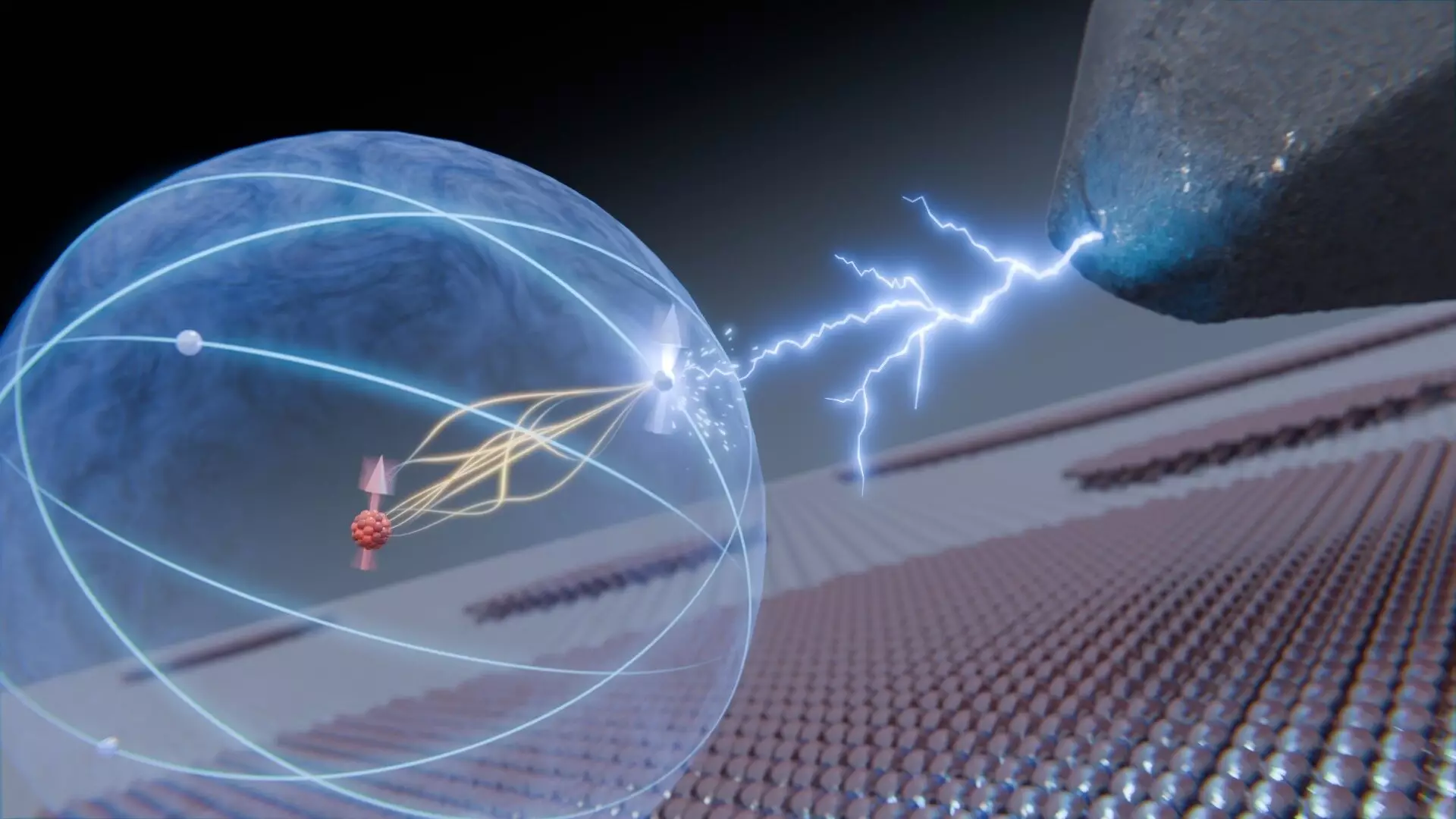A groundbreaking study from researchers at Delft University of Technology in The Netherlands has shed light on an unprecedented ability to control movements at the atomic level. The team successfully engaged with the atomic nucleus by manipulating an electron located in the outermost shells of a titanium atom. This innovative process, which they facilitated through a scanning tunneling microscope, sets the stage for potential advancements in the field of quantum information storage and processing. The findings were published in the leading journal, Nature Communications.
The focus of the research was on a specific isotope, titanium-47, distinguished by its one neutron deficit compared to the more prevalent titanium-48. This unique characteristic imbues Ti-47 with a slight magnetic property, vital for the experiments conducted. Dr. Sander Otte, the leading researcher, emphasizes that this magnetism creates a variable “spin” that acts like a compass needle, critical in representing quantum information. By manipulating this spin, researchers can potentially encode and store quantum data with high stability away from external interferences, a feat that could revolutionize quantum computing technologies.
An intriguing element of this study revolves around the weak “hyperfine interaction” that occurs between the nuclear spin and the electron spin. The nuclear spin, typically isolated within the vast space of an atom, becomes influenced by the electron’s spin due to this minuscule interaction, albeit only under narrowly defined conditions. Lukas Veldman, a notable figure in this research who successfully defended his Ph.D., highlighted the challenges posed by these minute interactions. The required precision in the magnetic field to tease out these effects adds layers of complexity to the experimental setup.
In an innovative series of experiments, the researchers introduced a voltage pulse to disrupt the electron spin, creating a scenario where both the electron and nuclear spins responded in unison for a fleeting moment. This synchronization aligns with key principles established by quantum mechanics, notably those put forth by the physicist Schrödinger. Remarkably, the outcomes of their experiments correlated closely with Veldman’s theoretical calculations, indicating that there is no loss of quantum information during this interaction. This real-time observation lends credibility to the idea that nuclear spins possess the potential for robust information storage, largely insulated from the surrounding chaotic environment.
While the pursuit of knowledge is indeed a primary motivator for these researchers, the potential applications of their findings create an electrifying narrative for the future of quantum technology. The ability to manipulate matter at such an infinitesimal scale could usher in a new realm of possibilities in quantum computing, where information can be stored with unprecedented fidelity. This breakthrough not only enhances our understanding of atomic behavior but also paves the way for future developments that could fundamentally alter our interaction with the quantum world. As research continues, the influence of humanity over atomic states may extend into realms previously deemed unattainable.

